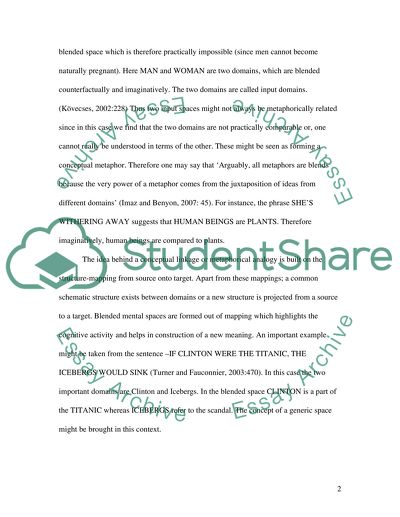Cite this document
(“Metaphors and Blends Essay Example | Topics and Well Written Essays - 2250 words”, n.d.)
Metaphors and Blends Essay Example | Topics and Well Written Essays - 2250 words. Retrieved from https://studentshare.org/literature/1554133-metaphors-and-blends
Metaphors and Blends Essay Example | Topics and Well Written Essays - 2250 words. Retrieved from https://studentshare.org/literature/1554133-metaphors-and-blends
(Metaphors and Blends Essay Example | Topics and Well Written Essays - 2250 Words)
Metaphors and Blends Essay Example | Topics and Well Written Essays - 2250 Words. https://studentshare.org/literature/1554133-metaphors-and-blends.
Metaphors and Blends Essay Example | Topics and Well Written Essays - 2250 Words. https://studentshare.org/literature/1554133-metaphors-and-blends.
“Metaphors and Blends Essay Example | Topics and Well Written Essays - 2250 Words”, n.d. https://studentshare.org/literature/1554133-metaphors-and-blends.


